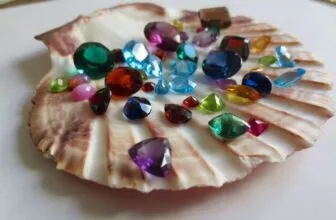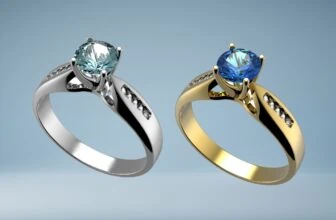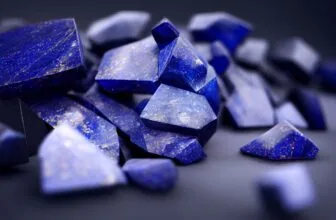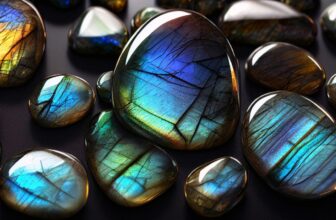
Table of Contents
Synthetic sapphires, also called lab-created or manmade sapphires, are becoming increasingly popular as more people move towards affordable and sustainable gemstone options.
While often mistakenly called ‘fake’ sapphires, synthetic sapphires are real sapphires, as they’re identical chemically, physically, and optically.
Let’s take a look at the pros and cons of synthetic sapphire, and why they make a great choice in jewelry.
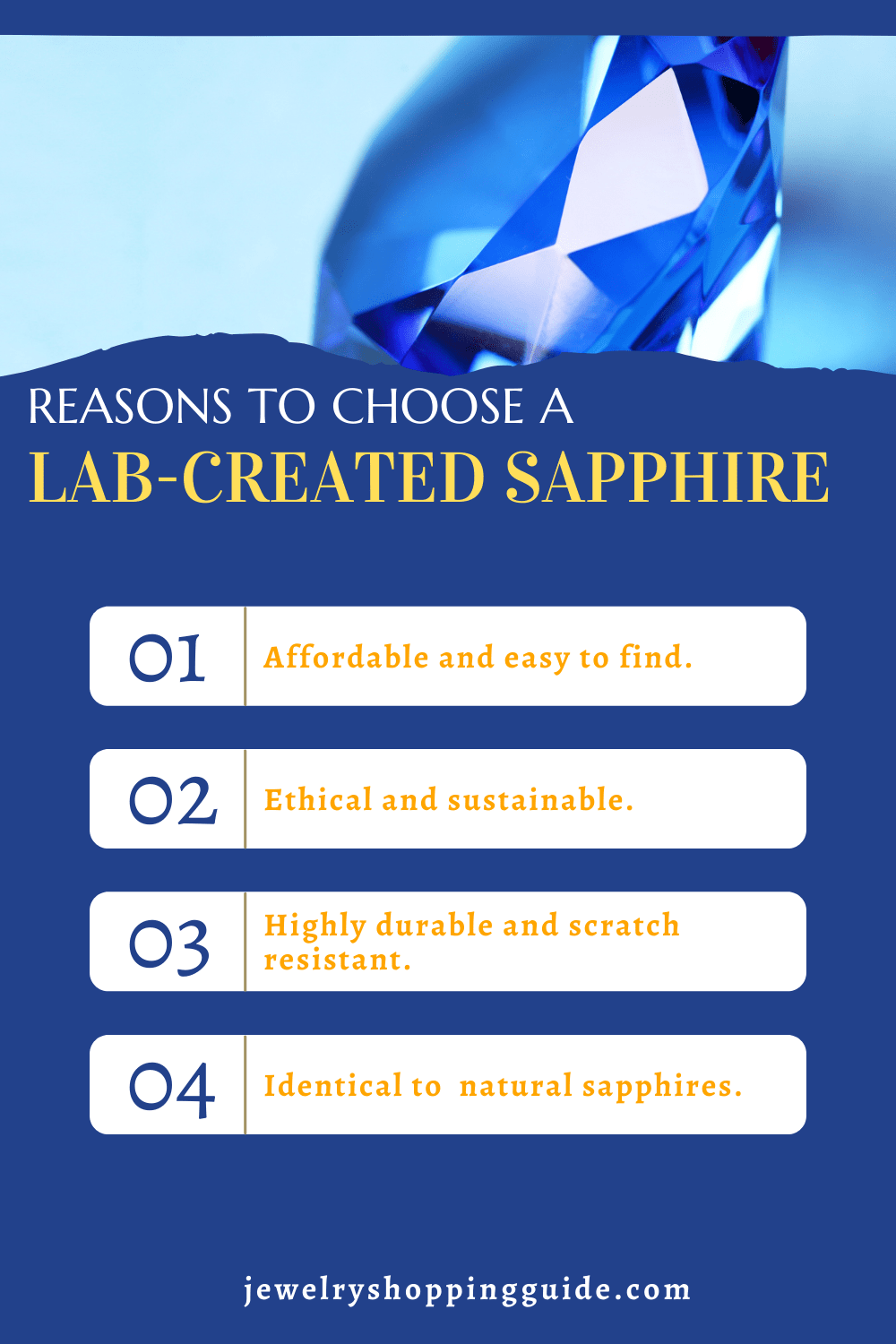
Why Are Synthetic Sapphires So Popular?
Natural sapphires are formed naturally over millions of years, under exacting conditions. This makes them exceedingly rare, unique, and highly sought after. While most people opt for natural sapphires, this comes with a high price tag.
In addition, extracting natural stones from the environment is costly and has a negative impact on the earth, as well as on the miners and surrounding communities.
These factors are some of the many reasons that have made synthetic sapphire popular among those for whom a natural sapphire isn’t an option, but who still like the traditional look of sapphire.
What’s the Difference Between Synthetic and Imitation Sapphires?
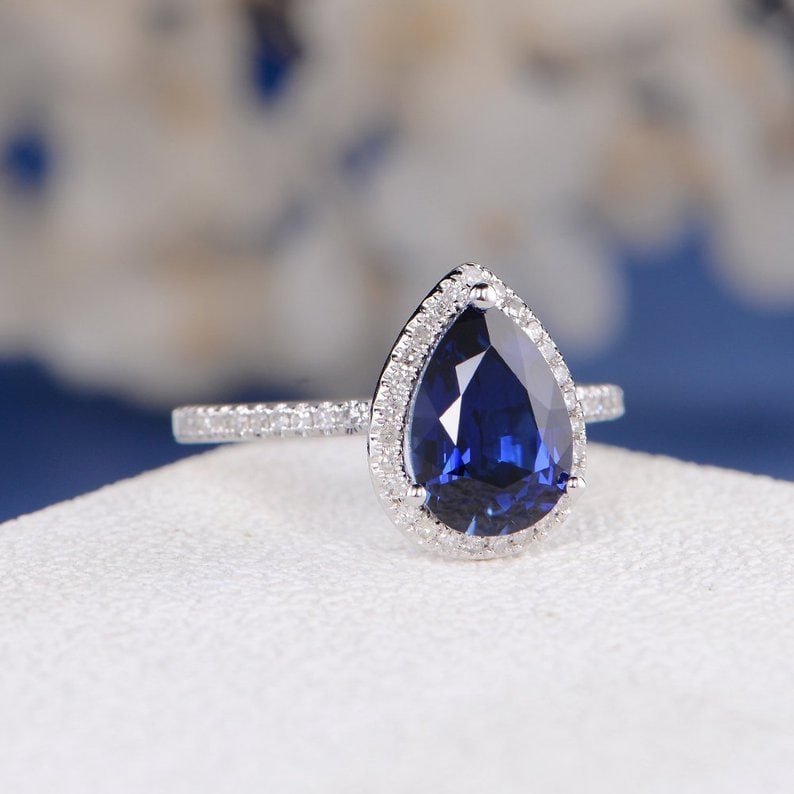
Lab-created sapphires and imitation sapphires are very different from each other. While many people wrongly believe that synthetic stones are fake, this isn’t true. Synthetic sapphires are real sapphires grown in labs, while imitations are simply look-alikes.
Lab-grown gems are produced by copying the properties of the original, usually by duplicating the environmental conditions that naturally mined stones are formed within.
These stones have a similar chemical composition, optics, and crystal structure to natural sapphires. In other words, they are the real thing. Sometimes lab-grown gemstones possess an even better, near-perfect quality compared to their natural counterparts.
You would be hard-pressed to tell the difference between a synthetic stone and a natural stone just by looking at it, and even experts can get this wrong.
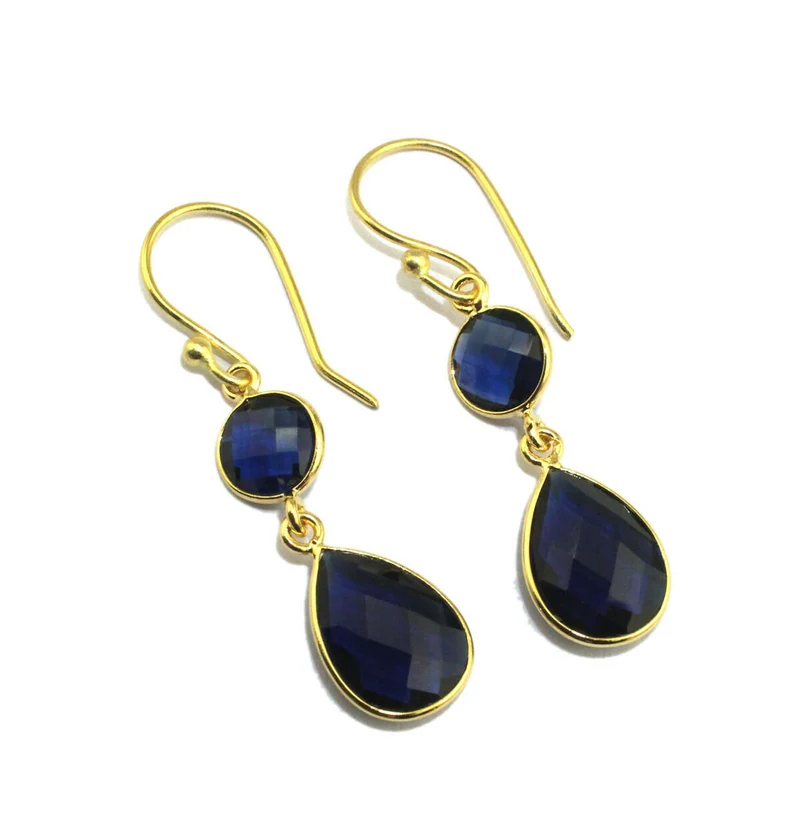
On the other hand, an imitation merely recreates the appearance of the original. Chemically, optically, and physically, imitation gemstones are very different from natural gemstones and are much less valuable. They are also less durable.
The most common imitation material for gemstones is glass. Glass makes for beautiful jewelry but compared to sapphire, it has little value and lower durability. Glass is also often easy to tell apart from sapphire due to the types of inclusions found within it, as well as the hues and brilliance of the glass.
Lab-Created Sapphires – Two Ingenious Methods
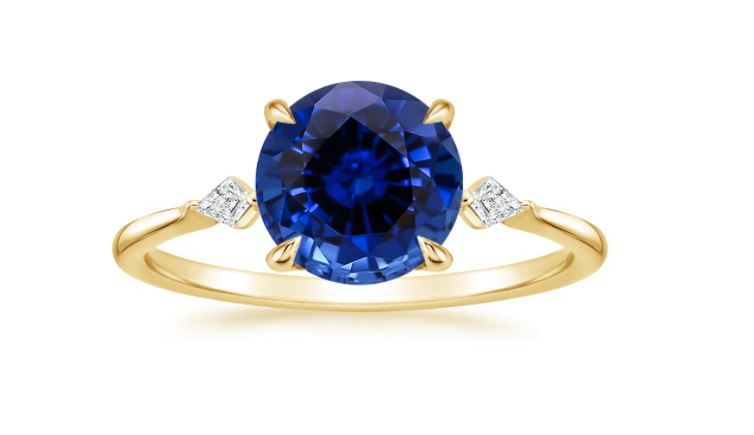
Among the most popular lab-grown gems is the sapphire, but they are also one of the hardest types of gemstones to grow. As natural sapphire is made of a variety of corundum with the formula Al2O3 (Aluminium oxide), this is what must be grown in tightly controlled environments to produce lab-created sapphires. There are different methods of growing sapphires in a lab. Of these, the Czochralski Pulled-Growth and the Flux Method yield higher-quality lab-grown sapphires.
1. The Czochralski Process:
This is a melt-growth method wherein nutrients are melted in a crucible. A thin seed of sapphire is then dipped into this molten material and pulled out at a controlled rate. The process is complicated and expensive.
2. Flux Growth:
This is a solution-growth method where the desired material, in this case, the sapphire seed, is dissolved together with a solution called flux. As the dissolved material cools, crystals form creating sapphires. Even though the lab is a controlled environment and not as unpredictable or erratic as the outside world in which natural sapphires grow, it is still hard to predict what the exact shade of a synthetic sapphire will be.
Synthetic sapphires can come in three different shades – deep blue, light blue, and bright royal blue (the most popular among the three).
Lab-Created Sapphire – Color and Varieties
The mineral corundum can yield different colors. It is broadly classified into two, with red corundum labeled as ruby, and all other colors of corundum called sapphire.
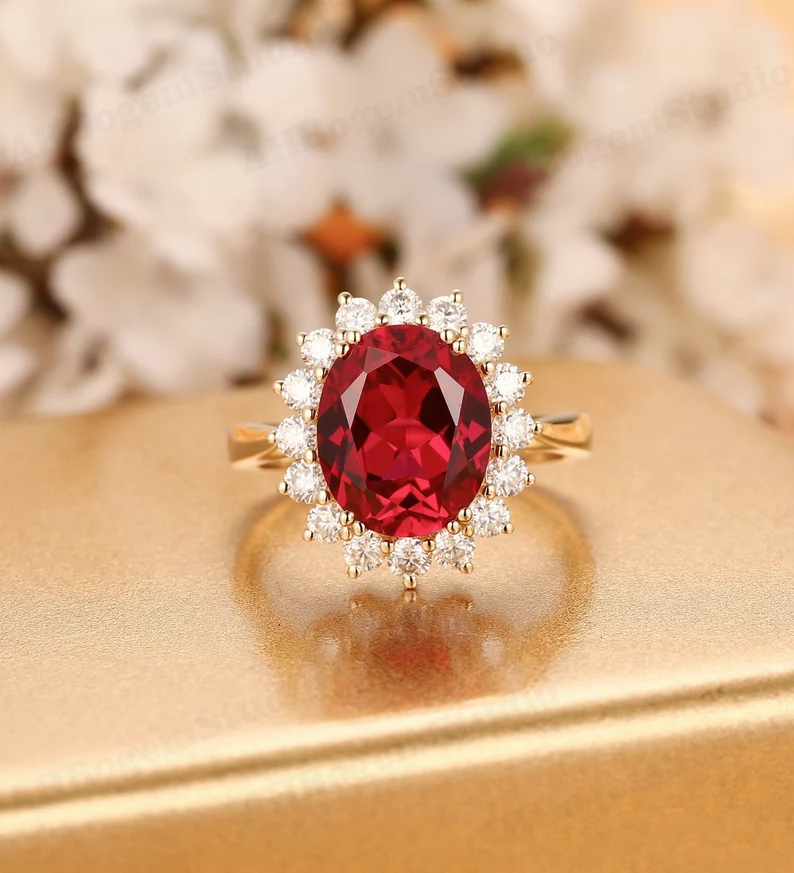
While lab-created sapphires come in a range of colors, the most popular are blue, yellow, and pink, with a gray or black variety turning up every once in a while.
To create the color of sapphire, certain foreign elements must be introduced during the formation of the stone.
- If titanium and iron traces are present, the sapphire will be blue.
- If the element chromium is introduced, the sapphire will be pink instead.
- High amounts of chromium will result in ruby.
- Chromium and titanium together will produce a purplish-pink sapphire.
- If there are no foreign elements, then the corundum will yield a white sapphire.
Apart from these, there are special types of colored sapphires that are not commonly known. Except for the Parti sapphire, the other varieties listed below can be found in synthetic form.
1. Parti-Sapphire
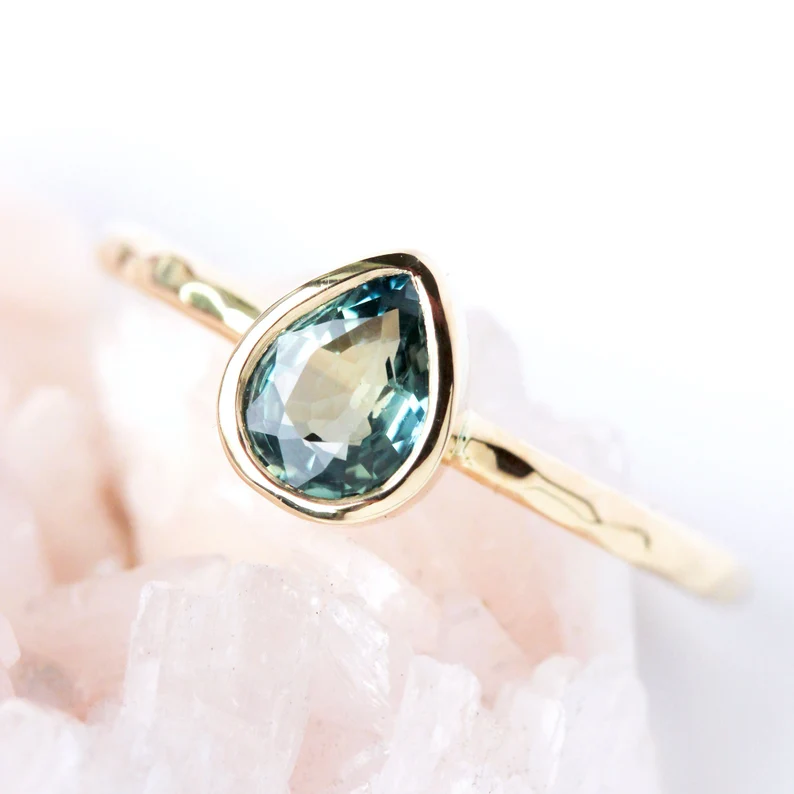
Parti sapphires exhibit two colors (parti meaning dual/multi, caused by zoning. This occurs when trace elements responsible for the coloring of the stone change during the stone’s formation, causing an uneven distribution of color.
Parti-colored sapphires are usually sourced from Australia and usually show blue and yellow blends. Stones like this are impossible to replicate via lab procedures, so you will have to look for a natural stone if you want a parti.
2. Padparadscha
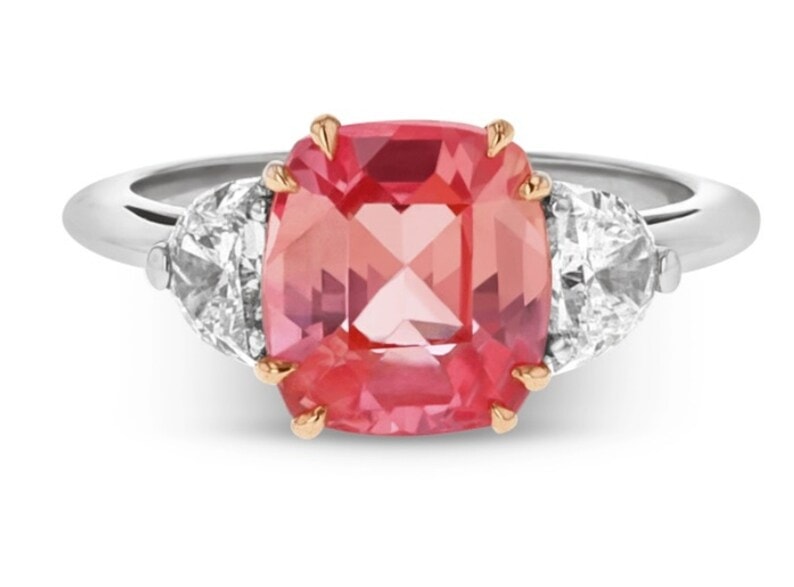
Derived from the Sanskrit word padmaraga, which means lotus, this gem has a beautiful shade of orange and pink similar to that of a lotus flower. The stone seemingly transforms from ruby to yellow sapphire.
The variety of corundum as sapphire is so wide that there are times when gemologists differ in opinions in classifying a gem either as Padparadscha or pink sapphire.
Usually, straightforward pink stones with little to no hint of orange are easily classified as pink sapphire. On the other hand, Padparadscha colors range from soft salmon with a hint of orange to red-orange, colors that are associated with sunrise and sunset.
Because of this Padparadscha color is sometimes referred to as sunrise and sunset colors.
3. Star Sapphire
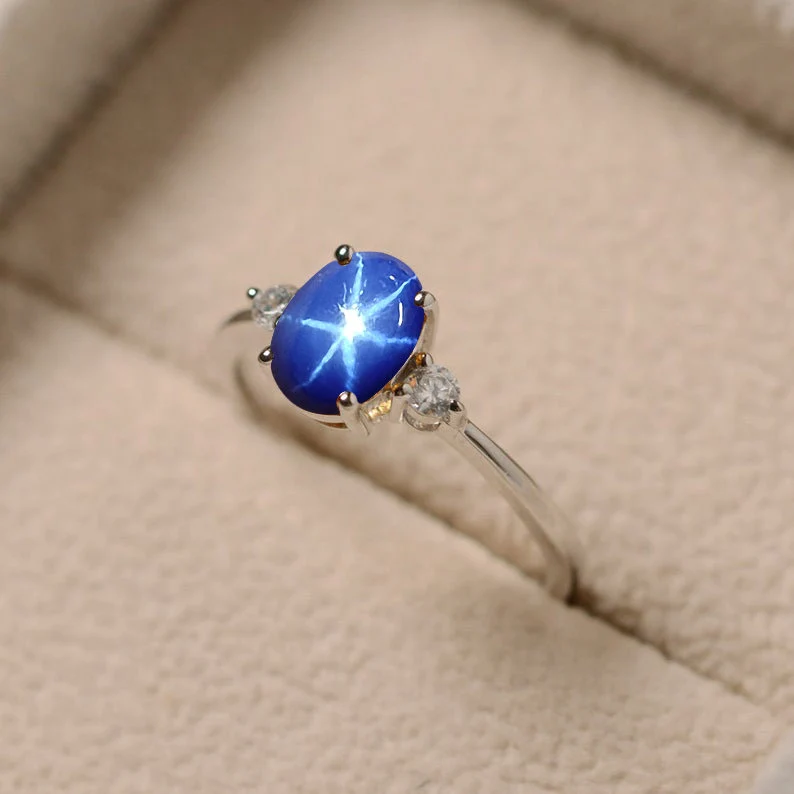
One of the most unique sapphires in existence, the Star Sapphire exhibits a star-like effect more commonly known as asterism, a phenomenon characterized by the appearance of a six-rayed star on the surface of the stone.
Asterism is caused by intersecting needle-like inclusions within the stone. Sapphires of this kind are cut en cabochon, as this accentuates the pattern of the star.
4. White Sapphire
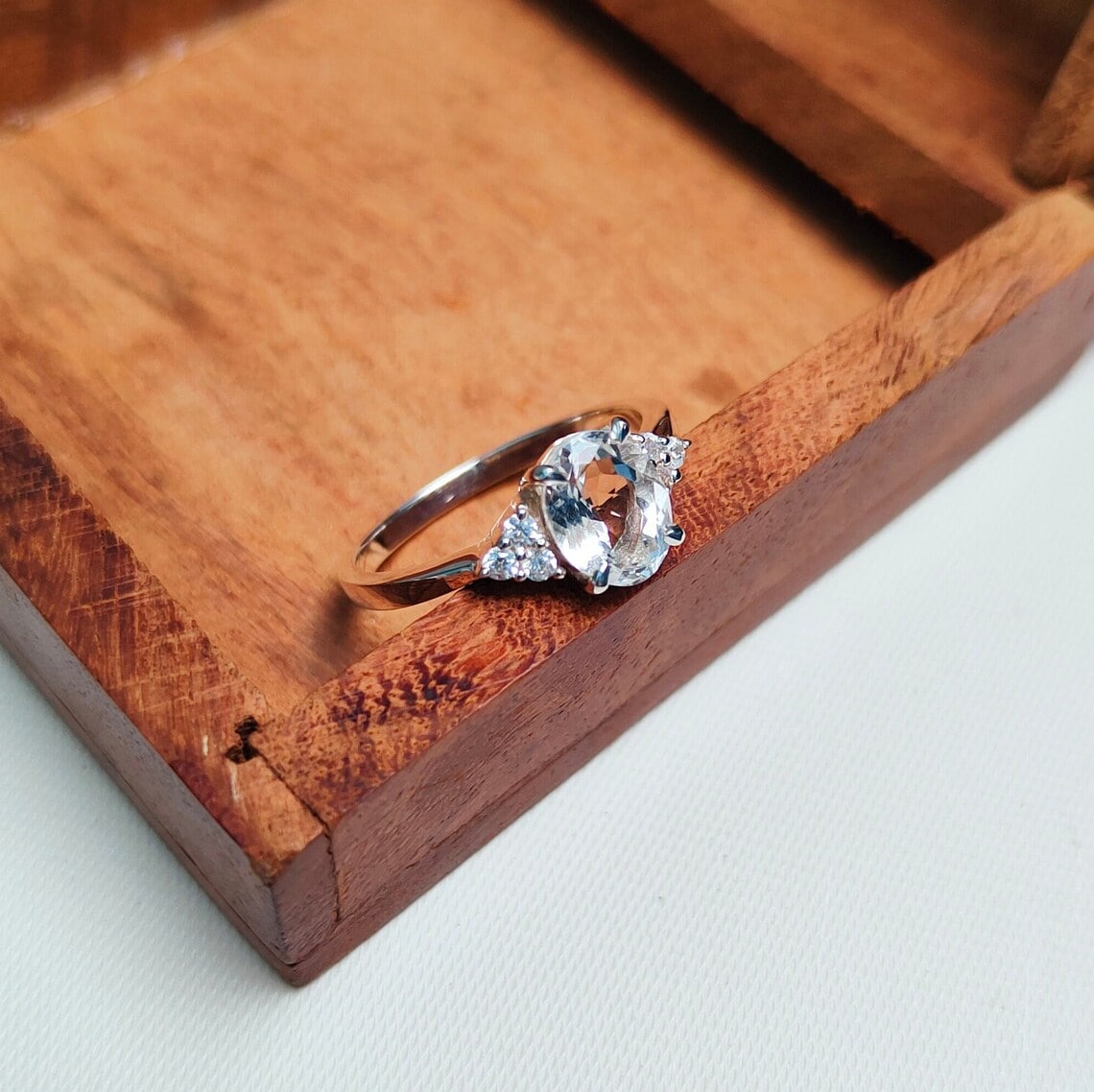
This is among the rarest sapphires available in the market in their natural form. White sapphires are colorless sapphires without any of the trace elements that give colored sapphires their hue.
Even though white sapphires are rare, they cost less than colored sapphires. They’re often a great alternative for diamonds and are commonly chosen as diamond ring substitutes. Synthetic white sapphire is plentiful and easy to find.
How to Identify a Lab-Created Sapphire
It’s easy to identify an imitation gem but it takes expertise to differentiate a lab-created sapphire from the original. These are methods that need to be carried out by an expert using special tools.
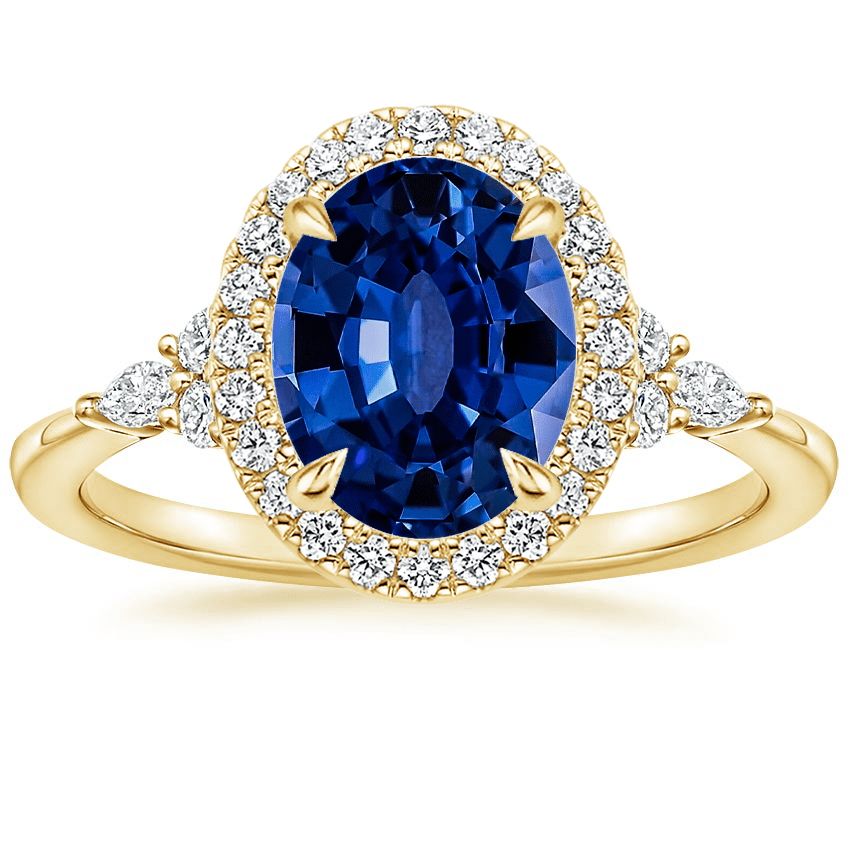
1. Natural Stains
Only expert gemologists would be able to natural stains in a sapphire, using a process called spectroscopy. Under high magnification and with special instruments, “natural stains” of imperfection on naturally mined stones become obvious.
As natural gems grow under unpredictable conditions below the earth, other elements tend to get mixed in during the stone’s molten stage. Inclusions can stay in the stone as it crystallizes from its molten form.
Lab-grown gems, on the other hand, are almost always perfect in appearance, as they are grown in a contained setting using a controlled ‘recipe’.
2. Carbon Dating
An effective way to test the age of a sapphire gemstone is by using carbon dating. Natural stones take millions of years to form so carbon dating, which is only limited up to 60,000 years, would not be able to identify its exact age. However, carbon dating would be able to determine a lab-grown gem’s age, since it only takes a short amount of time for sapphires to grow in labs.
Why Choose a Synthetic Sapphire?
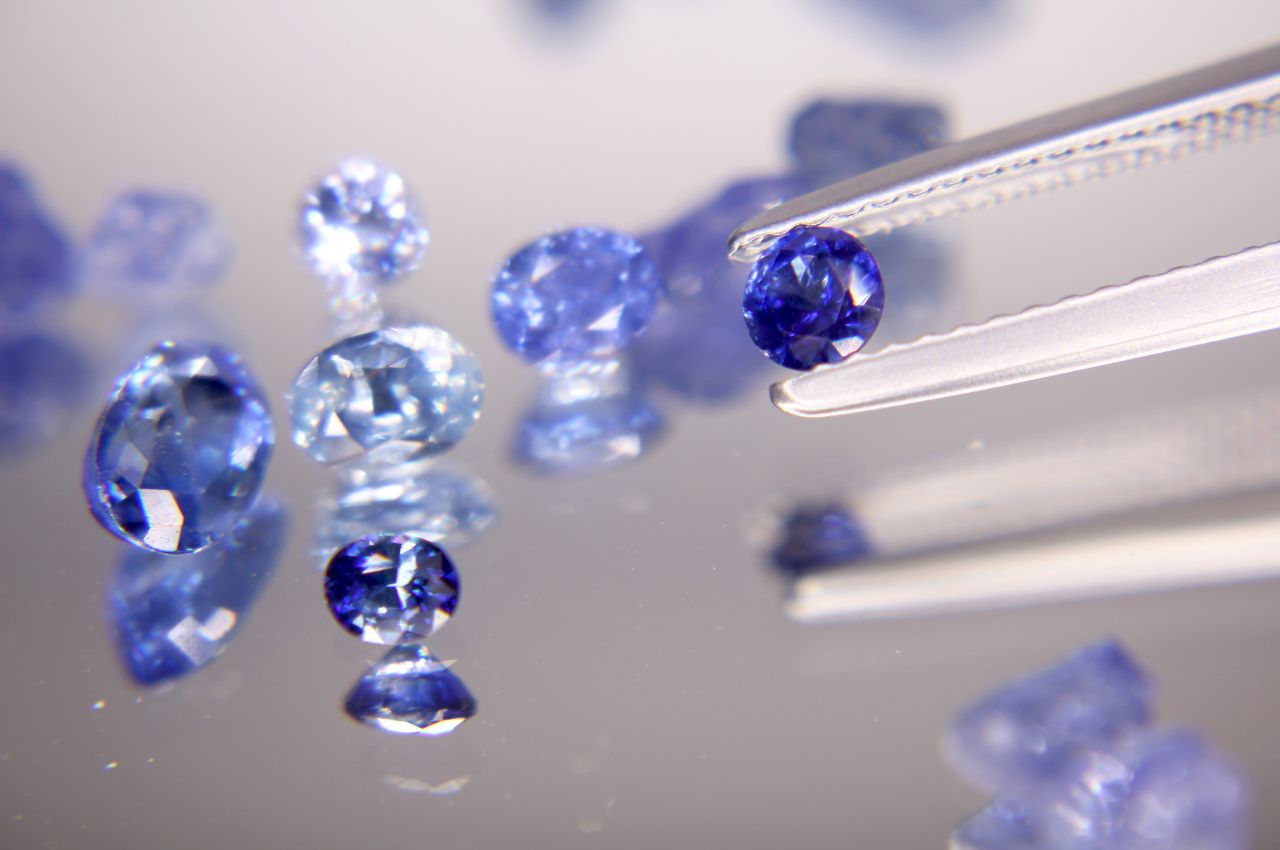
We’ve already talked about why synthetic sapphires are growing in popularity, but let’s take a look at what makes them a good choice.
1. Better Prices.
Natural sapphires can cost up to $10,000 higher per carat than lab-grown ones. This is due partly to two reasons.
First, most people perceive natural stones as being more valuable than synthetic stones. After all, one was a happy accident that took millions of years to form, while the other was a conscious human decision, created in a few months.
Secondly, it takes fewer resources (and time) to artificially grow a crystal than it does to mine them. Hence the price of synthetic sapphire is significantly lower.
2. Ethical Reasons.
Apart from this monetary aspect, synthetic sapphires have a low mining footprint, so they’re a great choice in terms of environmental sustainability.
Because they are created in laboratories, no harm is inflicted on the environment by way of soil pollution or excessive emission of carbon and other greenhouse gases.
There is no fear of the stone’s origin disrupting local lifestyles, funding wars, or being in any way associated with human exploitation. In short, it is an ethical choice.
3. Identical to the Mined Sapphires.
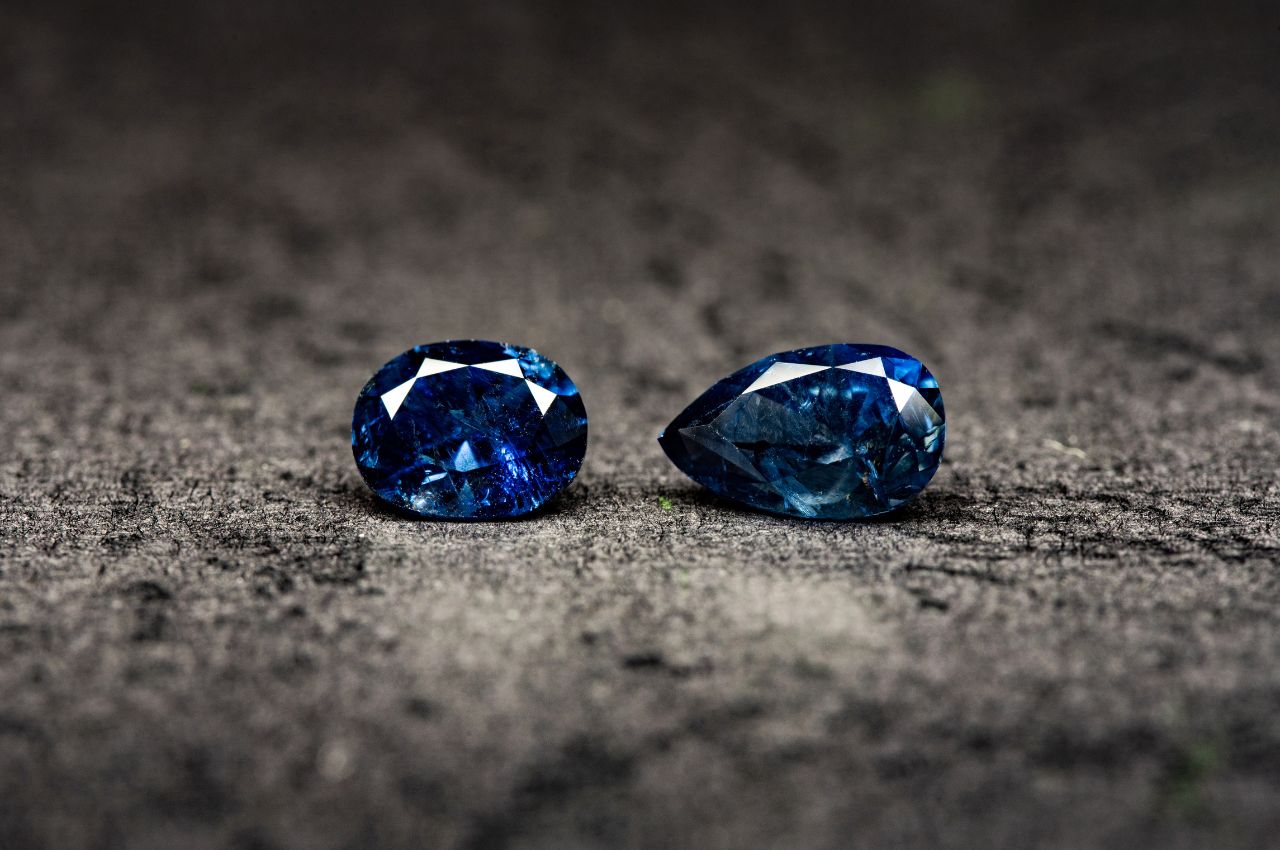
By identical, we mean identical to natural sapphires. As already mentioned, lab-created sapphires are identical to their natural counterparts, apart from barely noticeable factors, such as the minuscule inclusions that are present in natural stones.
4. Lower Environmental Impact:
Traditional mining has long been associated with a slew of environmental issues, ranging from habitat destruction to significant soil erosion. Such processes not only disrupt local ecosystems but also contribute to broader environmental degradation. In stark contrast, the production of lab-grown gemstones presents a more sustainable alternative.
These gemstones, cultivated in controlled environments, have a significantly reduced carbon footprint compared to their mined counterparts. By embracing lab-grown alternatives, we can enjoy the allure of precious stones without the hefty environmental price tag, paving the way for a balance between luxury and ecological responsibility.
5. Purity and Quality:
Lab-grown gemstones are created in controlled environments where the conditions for their formation are optimized. This means fewer impurities and inclusions compared to their natural counterparts. For instance, lab-grown diamonds often have fewer inclusions and defects than natural diamonds.
Lab-Created Sapphire Jewelry
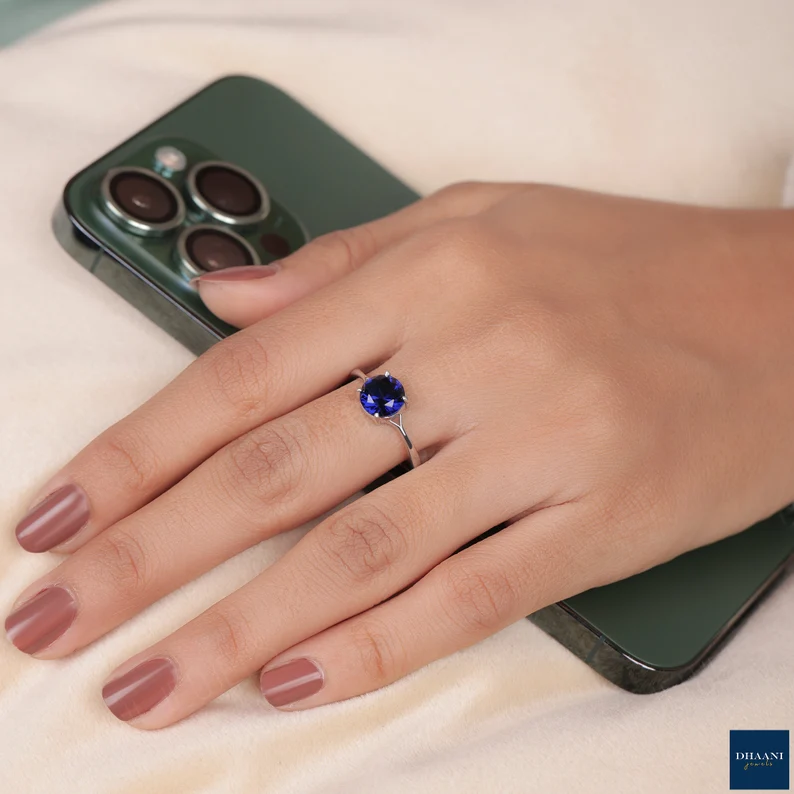
These days, there is a much wider selection of lab-grown sapphire jewelry than ever before, making it easy for you to choose your perfect piece.
While lab-created sapphire jewelry can range from a few dollars to hundreds of dollars, many factors influence the price, including the quality of the sapphire, as well as the materials and craftsmanship used for the setting. Just because it’s synthetic doesn’t mean that it’s always inexpensive.
Searching for synthetic sapphire jewelry online offers up endless options, easy comparison, and the ability to cherry-pick the right piece.
1. Lab-Created Sapphire Rings
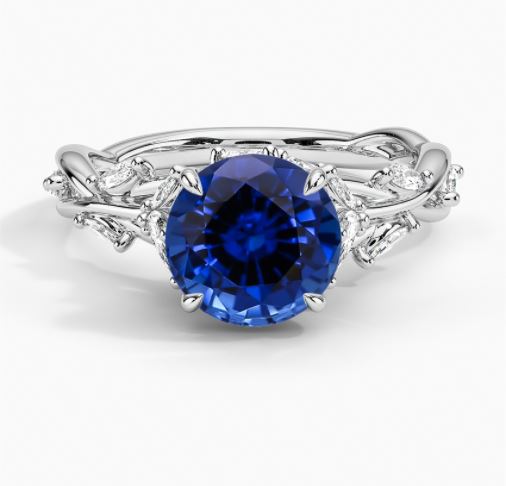
Sapphire rings are a beloved way to flaunt sapphires, as they’re suitable for any occasion. They’re great as birthday gifts for September babies, as it’s the birthstone for September.
Rings are also deemed to be an expression of love, so sapphire rings are perfect gifts for the 5th and 45th anniversaries.
In terms of the metal color, the rich shade of blue sapphire stands out against gold bands but is more vibrant when set in white gold or platinum.
Peach and pink sapphires tend to suit rose gold bands better, as the hues blend into each other, creating an almost seamless look.
One of the most popular settings for sapphire rings is the halo setting, as the sparkle of the surrounding diamonds brings out the color of the sapphire gemstone.
2. Lab-Created Sapphire Earrings
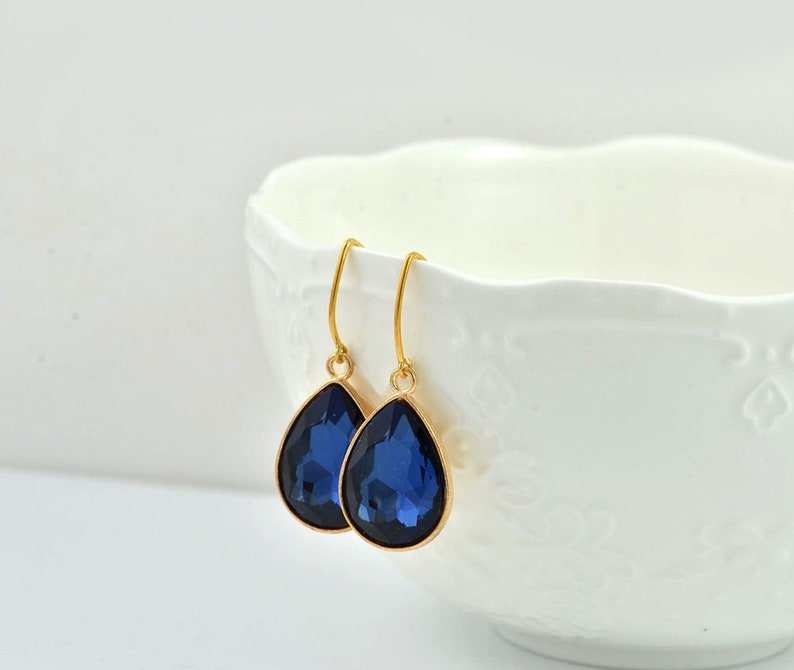
Studs, hoops, dangles, pave bars – take your pick from the wide range of sapphire earrings available.
For a dainty, classic look, consider tiny sapphire stud earrings. Whether you’re wearing them for work or a night out, this style transitions easily.
Dangle sapphire earrings are eye-catching, and perfect for a dressier option.
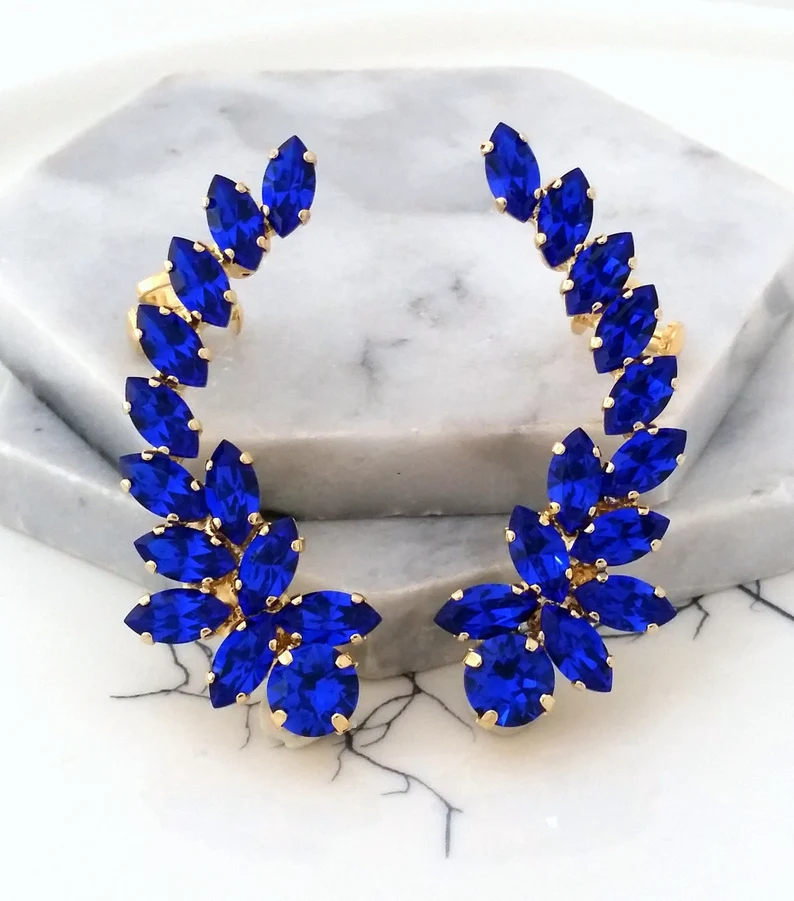
If you are one who keeps up with current trends, then ear climbers should definitely be on your list. There is a growing trend in wearing ear climbers or crawlers nowadays and sapphire is not one to be left behind.
You can choose it as the star gem, set at the end of the earring with diamonds paving the rest of the body. For gold set earring climbers, green sapphires provide a complimentary look.
3. Lab-created Sapphire Necklace and Pendants
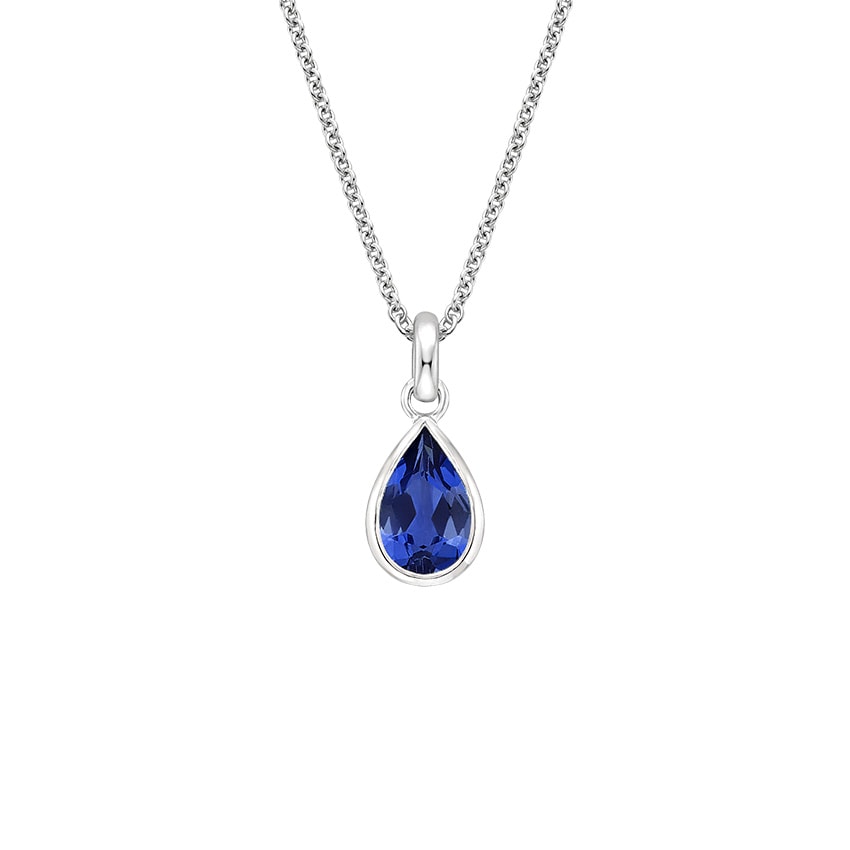
Sapphires make beautiful pendants, which are a great way to showcase these stones. As synthetic sapphires are more affordable and provide more options in terms of size, you will have a good chance of finding a pendant that speaks to you.
If you want to go with a trendier, edgy look, consider a sapphire choker necklace. This is eye-catching and unique when set against white gold and is perfect for a very dressy event. Light-colored sapphires, such as the pink variety, will work well with black velvet or black-beaded chokers. Purple or green sapphires are attractive either in silver or black settings.
Lab-Created Sapphire Engagement Rings
We all know that the number one choice when it comes to engagement rings is colorless diamonds. However, sapphires are also popular for engagement rings, and for the more non-traditional couple, they are a great option to get off the beaten path and yet still have class, glamor, and prestige.
Blue sapphires symbolize wisdom, kindness, and fortune, all features anyone would want in a romantic relationship.
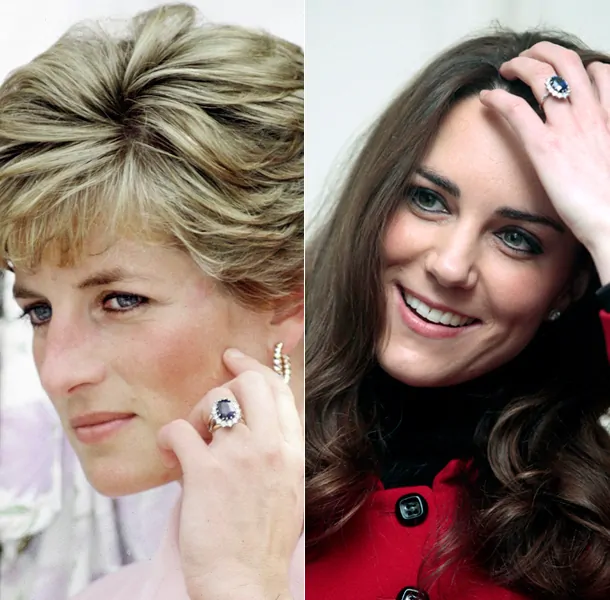
Traditionally, blue sapphire engagement rings have been associated with royalty throughout history. The most popular ring to date is the 18-carat oval Ceylon sapphire that once belonged to Princess Diana, now worn by Kate Middleton. The ring was resized and redesigned with two platinum studs to fit the Duchess.
So popular is this ring style, that there are endless replicas made using synthetic sapphire, such as this one. For some, blue sapphire can be too unconventional. If you prefer to have a white stone as the centerpiece of your ring, there are stunning white sapphires available on the market.
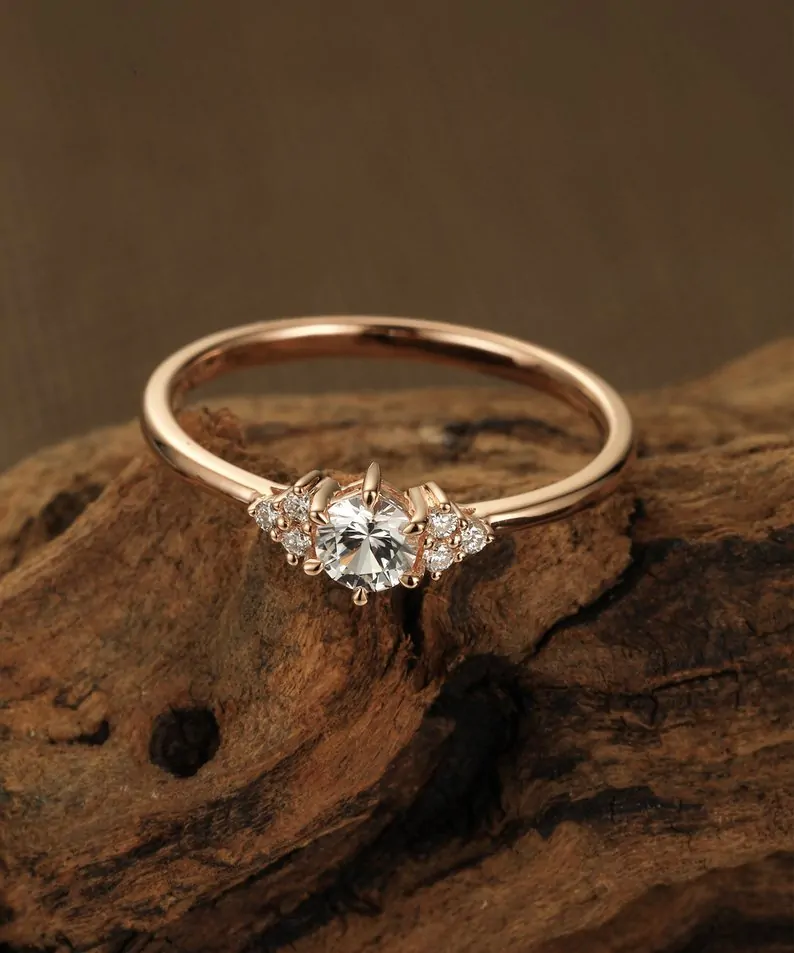
Ranking 9 on Moh’s scale of hardness, white sapphire is an excellent engagement ring alternative for diamonds. It’s possible to purchase a beautiful natural white sapphire engagement ring within a reasonable budget, as these stones tend to be inexpensive.
While diamonds have more sparkle than sapphires, white sapphires have a much whiter and brighter color. Since they are not as expensive as diamonds or blue sapphires, you can easily select the highest grade (triple A or AAA) while keeping to a budget.
To enhance its brilliance, choose a yellow gold or rose gold setting. Such colored bands will give a beautiful contrast to the sapphire’s whiteness and emphasize it.
Where to Buy Synthetic Sapphires
When searching for the dazzling allure of sapphires combined with a commitment to environmental responsibility, lab-created sapphires are the prime choice. These gemstones exude the same radiance as mined sapphires but come with the added assurance of ethical sourcing. Here’s where you can find these sustainable treasures:
- James Allen: A pioneer in online diamond retail, James Allen has expanded its offering to include lab-created gemstones, ensuring customers receive high-quality pieces with detailed online visualization tools.
- Blue Nile: One of the largest online jewelry retailers, Blue Nile boasts a wide selection of lab-created sapphires, making it easy for shoppers to find the perfect gem for any occasion.
- Angara Jewelers: With a rich history in the gemstone industry, Angara offers a curated collection of lab-created sapphires, ensuring that each piece meets their stringent quality standards.
Popular Online Platforms – Etsy and Amazon
When considering synthetic sapphires, both Etsy and Amazon emerge as popular platforms, each offering its distinct advantages.
If you’re looking for artisanal or vintage pieces, both Etsy and Amazon are excellent platforms to explore. On Etsy, known for its artisan-centric and handcrafted offerings, you can find exquisite rings that can be personalized to your taste, elegant pendants and necklaces with unique designs, handcrafted earrings ranging from simple studs to more intricate drop styles, and even bracelets and bangles that showcase the beauty of synthetic sapphires.
On the other hand, Amazon, the global retail behemoth, provides a diverse range of synthetic sapphire jewelry options. You can browse through an array of rings, from engagement pieces to cocktail rings, alongside a variety of necklaces, earrings, and bracelets. Amazon also offers coordinated jewelry sets and even features some men’s jewelry items, like cufflinks and tie pins accentuated with synthetic sapphires.
Wrapping Up
As an increasingly popular gemstone choice, synthetic sapphires have something to offer everyone. A versatile, stylish option that’s also affordable, durable, and identical to natural sapphires, lab-grown sapphire gemstones are perfect for jewelry.


